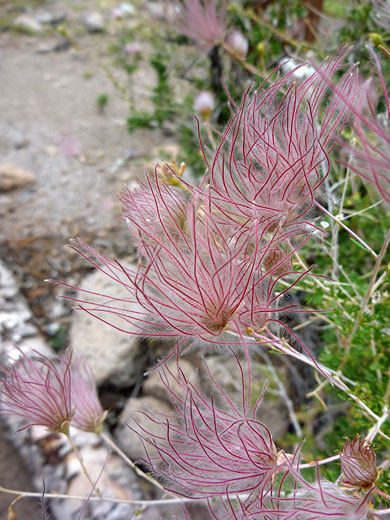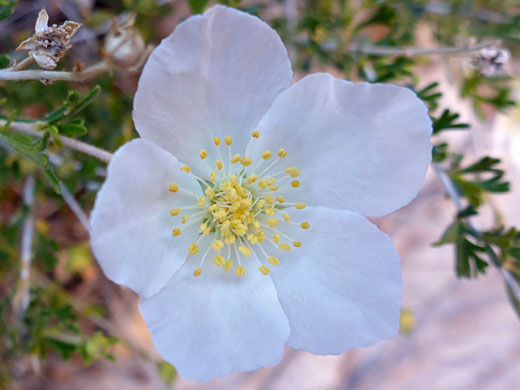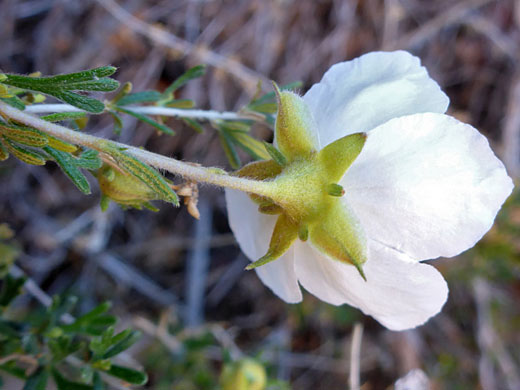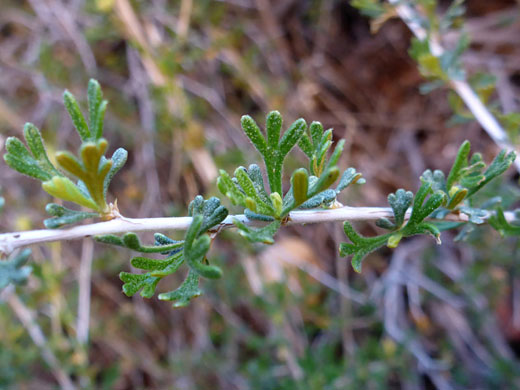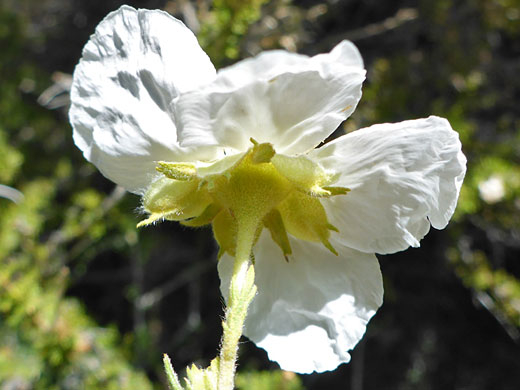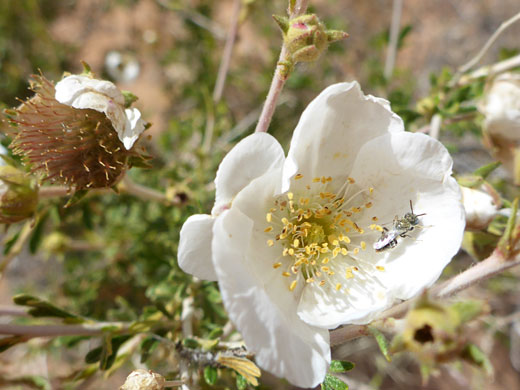Common names:
Apache plume, ponil
Family:
Scientific name:
Fallugia paradoxa
Main flower color:
Range:
South California and south Nevada, east to west Texas
Height:
Up to 6 feet
Habitat:
Dry slopes, washes and woodland; 3,300 to 7,200 feet
Leaves:
Divided into 3 to 7 lobes, each further divided
Season:
May to June
Fallugia paradoxa, the only member of this genus, is a shrub-like plant characterized by peeling, grey-white bark along its woody branches, and deeply divided grey-green leaves, which are hairy on the upper surface, and somewhat scaly underneath. Leaves are evergreen in many locations.
The saucer-shaped flowers have five large white petals (up to one inch in length) and five smaller sepals, with a center of many yellowish stamens and pistils. Between the sepals are five narrower bractlets, generally a little darker in color, and usually divided at the tip into up to seven lobes. In late summer, the flowers are replaced by long, red-purple styles bearing a feathery plumage, attached at the base to the small fruit.
The saucer-shaped flowers have five large white petals (up to one inch in length) and five smaller sepals, with a center of many yellowish stamens and pistils. Between the sepals are five narrower bractlets, generally a little darker in color, and usually divided at the tip into up to seven lobes. In late summer, the flowers are replaced by long, red-purple styles bearing a feathery plumage, attached at the base to the small fruit.
All Contents © Copyright The American Southwest | Comments and Questions | Contribute | Site Map




